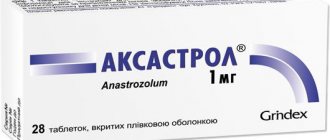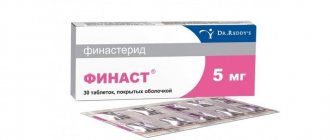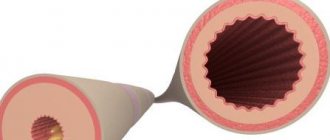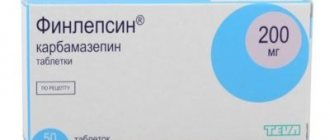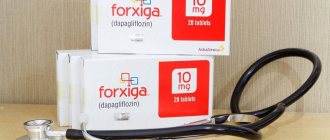Pharmacological authorities
Pharmacodynamics.
Eprosartan is a potent, non-peptide, orally active, non-biphenyl, non-tetrazole angiotensin II receptor blocker that selectively binds to AT1 receptors. Angiotensin II is a potent vasoconstrictor and the main active hormone of the renin-angiotensin-aldosterone system. Vine plays an important role in the pathogenesis of arterial hypertension. Angiotensin II binds to AT1 receptors in various organs and tissues (for example, in smooth meats of the vessels, glands, cervixes, hearts) and reveals such important biological effects as the sound of blood vessels, the blocking of sodium It also reduces aldosterone levels. Angiotensin II takes part in the formation of hypertrophy of the heart and blood vessels through its influx into the growth of smooth meat cells of the heart and blood vessels.
Eprosartan interferes with the influx of angiotensin II on arterial pressure, low blood flow and the presence of aldosterone in healthy individuals. The reduction in arterial pressure was maintained for 24 years without the development of postural hypotension after the first dose. Treatment with eprosartan does not cause a sharp increase in arterial pressure (swelling syndrome).
In patients with arterial hypertension, a decrease in arterial pressure after taking eprosartan is not accompanied by a change in heart rate.
During the open-blind, randomized, prospective MOSES study (illness and mortality after stroke, eprosartan versus nitrendipine for secondary prevention) 1405 patients with arterial hypertension Tension with cerebrovascular complications in the anamnesis were treated with either eprosartan or nitrendipine. In the eprosartan group, 78% of patients titrated to 600 mg daily and 12% to 800 mg daily. In the nitrendipine group, 47% took the drug at a dose of 10 mg and 42% – 20 mg per dose (11% – up to 40 mg). The primary combined end point developed from early mortality, cerebrovascular complications (transient ischemic attack, advanced reversible ischemic neurological deficit, stroke), as well as cardiovascular complications (unstable angina , myocardial infarction, heart failure, pulmonary embolism and fatal cardiac arrhythmias), including relapses. The whole arterial pressure was well reached in both groups of treatment and was supported throughout all investigations. After the primary end point, a significantly shorter result was shown in the eprosartan group (reduction in risk by 21%). In the first analysis, the decrease in risk was 12% for cerebrovascular and 30% for cardiac endpoints. These results were achieved primarily in terms of reducing the incidence of transient ischemic attack/sustained reversible ischemic neurological deficits, unstable angina and heart failure. Overall mortality was lower in the nitrendipine group. Thus, in the eprosartan group, 57 patients died out of 681 compared with 52 patients out of 671 in the nitrendipine group (CV 1.07; 95% confidence interval (CI) 0.73 – 1 .56; p = 0.725). Lethal and non-fatal myocardial infarction developed in 18 patients in the eprosartan group, equal to 20 in the nitrendipine group, stroke – in 36, equaled to 42 patients, similar to The effectiveness of eprosartan is equal to that of nitrendipine. For the primary endpoint, the effect of eprosartan was greater in patients who did not withdraw beta-blockers.
In patients with arterial hypertension, eprosartan does not reduce the level of glucose, triglycerides, cholesterol and low-density lipoproteins in blood plasma.
Eprosartan does not disrupt the mechanisms of self-regulation of the function of the nervous system. In healthy people, eprosartan improves the effective blood flow. Eprosartan supports the function of hypertension in patients with essential hypertension and patients with hypertension. Eprosartan does not alter glomerular filtration rate in healthy subjects, in patients with arterial hypertension and in patients with nitric deficiency of varying severity. Eprosartan has a natriuretic effect in healthy individuals on a low-salt diet. Eprosartan can be safely administered to patients with essential hypertension and neuronal deficiency of varying degrees of severity without causing a decrease in sodium or impairment of neuronal function.
Eprosartan does not interfere with the production of sechoic acid.
Eprosartan does not affect the effects associated with bradykinin activation mediated by angiotensin-converting enzyme (ACE), such as cough. During the study, there was an equalization of the frequency of cough in patients who were treated with eprosartan and in patients who took an ACE inhibitor, the frequency of dry persistent cough in patients who were treated with were treated with eprosartan (1.5%), was significantly lower (p < 0 .05), lower in patients who took an ACE inhibitor (5.4%). The frequency of cough of any nature was also significantly lower (p < 0.05) in patients who took eprosartan (21.2%), lower in patients who took an ACE inhibitor (29.9%). In another study aimed at increasing the incidence of culprit cough in patients who previously suffered from cough while taking ACE inhibitors, the incidence of dry persistent cough was 2.6% in the eprosartan group , 2.7% – in the placebo group and 25% – in ACE inhibitor group. The difference in the incidence of dry, persistent cough in the group of patients who took eprosartan and the group of patients who took an ACE inhibitor was statistically significant (p < 0.01), as well as such a difference when There was no treatment with eprosartan or placebo. The incidence of cough of any kind was also significantly lower (p < 0.01) with eprosartan, lower with the ACE inhibitor, and slightly increased with placebo. In addition, an external analysis of the results of 6 consecutive blind clinical studies, which included 1554 patients, demonstrated that the frequency of spontaneous cough in patients who took eprosartan was the same (3. 5%), what do sick people have? took placebo (2.6%).
Based on data from three clinical studies (n = 791), the effect of eprosartan on reducing arterial pressure was found to be the same as the effect of the ACE inhibitor enalapril, with a trend towards greater effectiveness and eprosartan.
The use of an ACE inhibitor in combination with an angiotensin II receptor blocker was monitored in two large randomized controlled studies (ONTARGET (global study of telmisartan monotherapy and combinations with ramipril) and VA NEPHRON-D (follow-up of diabetic nephropathy).
ONTARGET is a study conducted on patients with a history of cardiovascular or cerebrovascular disease or type 2 diabetes, which was accompanied by signs of target organ damage. VA NEPHROND is a study conducted on patients with type 2 diabetes and diabetic nephropathy.
Studies have shown the presence of a significant positive effect in patients with diseases of the cardiovascular system and a decrease in mortality, while preventing the development of the risk of hyperkalemia, acute Nicolic deficiency and/or decrease in arterial pressure was equalized with monotherapy. The clinical similarity of pharmacodynamic effects, these results may also be significant for other ACE inhibitors and angiotensin II receptor blockers.
Due to thyroid problems, overnight administration of an ACE inhibitor and angiotensin II receptor blocker is not recommended for patients with diabetic nephropathy.
The ALTITUDE study (administration of aliskiren to patients with type II diabetes mellitus at the endpoints of the cardiovascular system) was carried out using the method of grafting the cortex with the addition of aliskiren. before standard therapy with an ACE inhibitor or an angiotensin II receptor blocker for patients with type 2 diabetes and chronic deficiency, illness of the cardiovascular system, or a combination of these illnesses. The study ended ahead of schedule due to the increased risk of adverse reactions. There was an increased incidence of stroke and death, as well as side effects, including serious ones (hyperkalemia, hypotension and impaired function of the brain), in the group The treatment with aliskiren was equal to the placebo group.
Pharmacokinetics.
The absolute bioavailability of eprosartan after a single oral dose of 300 mg is approximately 13% following limited absorption. The peak concentration of eprosartan in blood plasma after oral administration should be observed within 1-2 years. Data from the study of the pharmacokinetics of eprosartan depend on the dose, its concentration in blood plasma was proportional to the dose for stable doses of 100 to 200 mg and less proportional for stable doses of 400 to 800 mg. The period of administration of eprosartan after oral administration should be 5-9 years. When stagnant, eprosartan does not accumulate completely. Suspension of eprosartan with water leads to a slight decrease in absorption due to a decrease in Cmax and AUC by 25%, which does not cause significant clinical effects.
The plasma protein binding of eprosartan is high (approximately 98%) and stable over the therapeutic concentration range. Protein binding does not depend on the patient's condition, age, impaired liver function, or the presence of mild/mild nitric deficiency in the patient, but changes in some patients with severe nitric deficiency. ї insufficiency.
In humans, following oral and intravenous administration of 14C-eprosartan, eprosartan is the only substance found in blood plasma and feces. Approximately 20% of radioactive eprosartan is excreted as acylglucuronide and 80% as unchanged eprosartan.
The volume of the eprosartan subdivision is approximately 13 liters. The normal plasma clearance is approximately 130 ml/min. Eprosartan is excreted from the cut and chewing. After intravenous administration of 14C-eprosartan, approximately 61% of the radioactivity is detected in feces and approximately 37% in meat. Following oral administration of 14C-eprosartan, approximately 90% of the radioactivity is detected in feces and approximately 7% in stool.
The AUC and Cmax values of eprosartan will increase especially in the summer (about 2 times on average), but will not require a change in dosage.
The AUC value of eprosartan will increase (on average by approximately 40%) without changing Cmax in patients with hepatic insufficiency, which also does not require a change in dosage.
The AUC and Cmax values of eprosartan were approximately 30% higher in patients with mild nitric deficiency (creatinine clearance 30-59 ml/h) and 50% higher in patients with severe nitric deficiency (creatinine clearance thickness 5-29 ml/xv) equalized with persons with normal function nirok. There is no need for daily dosing changes.
In women and men, the pharmacokinetics of eprosartan is not altered.
Contraindicated
Hypersensitivity to active speech or to any inactive component of a medicinal product.
Vagity or planning of vaginity (div. section “Congestion during pregnancy or breastfeeding”).
Bilateral renovascular disease with significant impairment of hemodynamics or severe stenosis of the artery of a single functional artery.
Immediate administration of the drug Teveten® with drugs to replace aliskiren in patients with cellular diabetes or impaired thyroid function (glomerular filtration rate < 60 ml/xv/1.73 m2) (div. sections “Interactions with other medicinal agents and other types of interactions " and "Pharmacological power").
Interactions with other medicinal drugs and other types of interactions
Due to the fact that in placebo-controlled studies there was an increase in the level of potassium in blood syringation, and due to the fact that other drugs are stagnant, they affect the renin-angiotensin-aldosterone system, very It is expected that eprosartan will be immediately combined with potassium-sparing diuretics, grub additives and salt substitutes to replace potassium, and other drugs that can increase potassium levels in serum (for example, with heparin), can lead to increased potassium levels in serum.
Clinical data indicate that there is a sustained blockade of the renin-angiotensin-aldosterone system when combined with ACE inhibitors, angiotensin II receptor blockers or aliskiren. led to an increased frequency of side effects such as hypotension, hyperkalemia and decreased function of the brain (including hypothyroidism). ), compared with monotherapy with a drug that acts on the renin-angiotensin-aldosterone system (sections “Contraindications”, “Peculiarities of drug administration” and “Pharmacological authorities”).
The antihypertensive effect of eprosartan may be enhanced by other antihypertensive drugs.
Information about the toxicity and blood circulation in blood syringation during one-hour administration of drugs containing ACE inhibitors. It is not possible to exclude the possibility of a similar effect when taking eprosartan, so it is recommended to monitor blood levels during one-hour treatment with drugs.
Eprosartan has no effect in vitro
blocking effect on the human cytochrome P450 enzyme system CYP1A, 2A6, 2C9/8, 2C19, 2D6, 2E and 3A
As with the ingestion of ACE inhibitors, the immediate ingestion of angiotensin II receptor blockers with non-steroidal anti-inflammatory drugs can lead to an increased risk of impairment of the function of nerves, including the possibility of acute inflammation Nicolic deficiency and hypotension of potassium levels in serum, especially in patients with already impaired nirofunction. This combination should be used with caution, especially for summer age patients. Patients should be adequately hydrated to begin therapy and monitor their function periodically.
Concomitant therapy with losartan and the non-steroidal anti-inflammatory drug indomethacin resulted in a decrease in the effectiveness of the angiotensin II receptor blocker; the class effect of the angiotensin II receptor blocker cannot be excluded.
Side effects of the drug Teveten
In placebo-controlled clinical studies, the overall incidence of adverse events that occurred with eprosartan was comparable to placebo. Side effects were usually minor and disappeared on their own. Only in 4.1% of patients taking eprosartan did it become necessary to stop taking the drug. According to clinical studies, side effects occurred when using eprosartan with the following frequency: From the central nervous system - frequent (1/100, ≤1/10): headache, dizziness. From the cardiovascular system - frequency unknown: hypotension, including postural hypotension. From the skin and subcutaneous tissues - frequency unknown: allergic skin reactions (rash, itching, urticaria), angioedema, facial swelling. From the gastrointestinal tract - often (1/100, ≤1/10): nausea, vomiting, diarrhea, nonspecific gastrointestinal disorders. General disorders and reactions at the injection site - common (1/100, ≤1/10): asthenia. In addition to the side effects identified during clinical trials, the development of the following side effects was recorded during post-marketing use of eprosartan. Frequency unknown. From the urinary system - impaired renal function, including renal failure, in patients at risk (for example, with renal artery stenosis).
Features of good stagnation
Impaired liver function
When administering eprosartan to patients with impaired liver function, be especially careful in connection with the risk of stagnation in this population.
Impaired function of the nirok
No dosage adjustment is required for patients with nicotine deficiency from mild to severe levels (creatinine clearance ≥ 30 ml/min). It is recommended to administer the drug with caution to patients with creatinine clearance < 30 ml/h or to patients on dialysis.
Patients at risk of impaired function of the brain
Some patients whose function is affected by the activity of the renin-angiotensin-aldosterone system (for example, patients with severe heart failure [class IV according to the NYHA classification], double heart stenosis artery or stenosis of the artery of the common artery), may be a risk for the development of oligouria and/or progressive azotemia and, rarely, acute nitric deficiency during therapy with ACE inhibitors. Such complications are more common in patients who simultaneously take diuretics. There is no sufficient therapeutic evidence for a similar risk to the development of dysfunction of the nervous system in these ill patients when treated with angiotensin II receptor blockers, such as eprosartan. If eprosartan is prescribed to patients with impaired narcotic function, it is necessary to evaluate the narcotic function before starting treatment and periodically during drug administration. Since the duration of therapy is to avoid deterioration of the function of narcotics, the usefulness of treatment with eprosartan should be reconsidered.
Low precautions should be taken based on the evidence of stagnation of other drugs of this class and also ACE inhibitors.
Hyperkalemia
Treatment with medications that affect the renin-angiotensin-aldosterone system can prevent hyperkalemia, especially if there is evidence of impaired neurological function and/or cardiac failure. Continuous monitoring of blood serum potassium is recommended for patients with risk.
Based on the evidence of drug administration that affects the renin-angiotensin-aldosterone system, the immediate administration of eprosartan with potassium-sparing diuretics, salt substitutes, to replace potassium, or otherwise Some medications that can increase potassium levels (such as heparin) can cause Before potassium increases in the blood, caution is required.
Subsequent blockade of the renin-angiotensin-aldosterone system
There is evidence that the immediate administration of ACE inhibitors, angiotensin II receptor blockers or aliskiren increases the risk of hypotension and hyperkalemia. and decreased function of nitric acid (including acute acute nicoric deficiency). Therefore, secondary blockade of the renin-angiotensin-aldosterone system from a concentrated combination of ACE inhibitors, angiotensin II receptor blockers or aliskiren is not recommended (division “Interactions” with other medicinal methods and other types of interactions" and "pharmacological authorities").
Since therapy with a subcutaneous blockade is absolutely necessary, it must be carried out under the watchful eye of a physician and with partial monitoring of the function of blood, electrolytes and arterial pressure. Concurrent administration of ACE inhibitors and angiotensin II receptor blockers is not recommended for patients with diabetic nephropathy.
Primary hyperaldosteronism
Treatment with eprosartan in patients with primary hyperaldosteronism is not recommended.
Hypotension
Symptomatic hypotension may occur in patients with a significant deficiency of sodium and/or salt (for example, as a result of exposure to high doses of sechoginous drugs). It is recommended to correct this deficiency before treatment with the medicinal product Teveten®.
Disease of the coronary arteries
Evidence of administration of eprosartan to patients with diseases of the coronary arteries.
Aortic and mitral valve stenosis/hypertrophic cardiomyopathy
As with all vasodilators, eprosartan should be used with caution in patients with aortic and mitral valve stenosis or hypertrophic cardiomyopathy.
Nirka transplantation
Evidence of the use of eprosartan in patients with recent transplantation has been ongoing.
Suspension during pregnancy
.
Do not start therapy with angiotensin II receptor blockers during pregnancy. The patient who plans to have vaginal insufficiency should be transferred to an alternative antihypertensive treatment with a known safety profile for vaginitis. If pregnancy is established, treatment with an angiotensin II receptor blocker should immediately be considered and require alternative therapy (section “Contraindications” and “Contraindication during pregnancy or breastfeeding”).
Other guards
As was noted in the case of ACE inhibitors, eprosartan and other angiotensin II receptor blockers are apparently less effective in reducing blood pressure in patients of black races compared to other races. , it is possible that low renin will become increasingly important in the black population with hypertension.
Patients with rare episodes of illness, such as galactose intolerance, lactase deficiency or glucose-galactose malabsorption, should not take this drug.
Suspension during pregnancy or breastfeeding
.
The medical treatment should not be limited to pregnant women or women who are planning to become pregnant.
Epidemiological data on the risk of teratogenicity due to exposure to ACE inhibitors during the first trimester of pregnancy are not conclusive, but the slight increase in risk cannot be turned off. Due to the limited number of controlled epidemiological studies of the risk associated with angiotensin II receptor blockers, it is not possible to exclude this risk for drugs in this class. The patient who plans to have vaginal insufficiency should be transferred to an alternative antihypertensive treatment with a known safety profile for vaginitis. If pressure is established, treatment with an angiotensin II receptor blocker should immediately be considered as an alternative therapy.
It appears that in humans, therapy with an angiotensin II receptor blocker during the second and third trimester causes fetotoxicity (decreased neuronal function, oligohydramnios, inhibition of ossification of the skull bones) and neonatal toxicity. yes (nikovic deficiency, arterial hypotension, hyperkalemia). Since it was discovered that the angiotensin II receptor blocker was inactive in the other trimester of pregnancy, ultrasound examination of the fetal skull parts and cysts was recommended.
Newborns whose mothers have been prescribed angiotensin II receptor blockers must be carefully guarded against the development of arterial hypotension (sections “Contraindications” and “Peculiarities of administration”).
Teveten® is not recommended for use during breastfeeding, as there are daily data. It is important to use alternative methods of care to establish a safety profile for breastfeeding throughout the breastfeeding period, especially during the birth of newborn or premature babies.
This is due to the fluidity of the reaction during treatment with vehicles or other mechanisms.
The impact of eprosartan on distribution by motor transport and other mechanisms has not been studied, but based on the pharmacodynamic properties of the drug, it is unlikely that it has a negative impact on this production. However, if care is taken, inode residues in treated arterial hypertension may result in fatigue and confusion.
Special instructions for the use of the drug Teveten
In patients with significant fluid and/or salt deficiency (for example, due to the use of diuretics in high doses), arterial hypotension may occur. It is recommended to restore this deficiency before starting treatment with Teveten. During therapy with ACE inhibitors in patients whose renal function depends on the activity of the renin-angiotensin-aldosterone system (for example, patients with severe heart failure, bilateral renal artery stenosis or renal artery stenosis of a single kidney), oliguria and/or progressive azotemia develops and, less commonly, — OPN. Since there is no sufficient therapeutic experience with the use of Teveten in patients with severe heart failure and renal artery stenosis, it cannot be ruled out that it may also cause renal dysfunction in them due to blocking the renin-angiotensin-aldosterone system. If Teveten is used in patients with renal failure, it is necessary to check renal function before starting treatment and periodically during use of the drug. If deterioration in renal function is noted during therapy, the advisability of treatment with Teveten should be reconsidered. Patients with hereditary diseases such as galactose intolerance, lactase deficiency, Lapp syndrome or glucose-galactose malabsorption are not recommended to take the drug. There is insufficient experience with the use of Teveten during pregnancy. Drugs acting on the renin-angiotensin-aldosterone system can cause fetal death and disease and death in newborns when used for treatment in pregnant women in the second and third trimester of pregnancy. Like other drugs that affect the renin-angiotensin-aldosterone system, Teveten should not be prescribed during pregnancy, and if pregnancy is detected during therapy, treatment should be stopped as quickly as possible. Women who are breastfeeding are contraindicated to take Teveten. Based on the pharmacodynamic properties of the drug, it is unlikely that it will adversely affect the ability to drive a vehicle or operate machinery. However, caution should be exercised as sometimes during treatment of hypertension (arterial hypertension) a feeling of fatigue and dizziness may occur.
Method of congestion and dosage
The recommended dose for adults is 600 mg of eprosartan once a day (vrantsi).
In most patients, the maximum reduction in arterial pressure is achieved after 2–3 deep treatments.
Teveten® can be used as monotherapy or in combination with other antihypertensive agents. Zocrema, supplemented with thiazide diuretics, such as hydrochlorothiazide, or calcium channel blockers, such as nefedipine, showed an additive effect when administered with eprosartan.
The drug can be taken independently of the same.
Summer age patients
There is no need for special dosage selection for summer age patients.
Patients with impaired liver function
Evidence of congestion for patients with hepatic insufficiency (section “Peculiarities of congestion”).
Patients with impaired nirofunction
For patients with terminal or severely impaired function (creatinine clearance <60 ml/min), the dosage should not exceed 600 mg.
Children
. Prescribing medical treatment to patients in this category is not recommended due to insufficient data on safety and effectiveness.
Release form and composition
- film-coated tablets, 400 mg each: color – light pink, shape – oval, biconvex, engraving on one side – “5044”, on the other – SOLVAY (in blisters of 14 pcs., in a cardboard pack of 1, 2 or 4 blister);
- film-coated tablets, 600 mg each: color – white, shape – oval, biconvex, engraving on one side – “5046”, on the other – SOLVAY (in blisters of 14 pcs., in a cardboard pack 1, 2 or 4 blisters ).
Composition of 1 film-coated tablet:
- active substance: eprosartan – 400 or 600 mg (eprosartan mesylate – 490.55 or 735.8 mg);
- auxiliary components (400/600 mg, respectively): microcrystalline cellulose – 179.05/43.3 mg; lactose monohydrate – 28.75/43.3 mg; gelatinized corn starch – 28.75/43.3 mg; crospovidone – 32/38.5 mg; magnesium stearate – 6/7.2 mg, purified water – 34.9/50.9 mg;
- shell (400/600 mg, respectively): Opadry pink (YS-1-14643-A)/Opadry white (OY-S-9603) – 32/38.5 mg.
Overdose
It is important to overdose people and deprive them. In the post-marketing period, there is information about the administration of internal doses up to 12,000 mg. Most patients reported a variety of symptoms. One patient experienced circulatory collapse after taking eprosartan 12,000 mg. The patient is fully clothed. The most common manifestation of overdose may be arterial hypotension. In case of symptomatic arterial hypotension, it is necessary to consider appropriate supportive therapy.
Overdose
Symptoms of overdose are dehydration and electrolyte imbalance, manifested in the form of nausea and drowsiness, as well as a sharp decrease in blood pressure.
Depending on the time that has passed after taking Teveten, treatment of an overdose includes taking enterosorbents and gastric lavage. In case of pronounced arterial hypotension, it is advisable to place the patient in a horizontal position and elevate his legs, and, if necessary, inject plasma-substituting fluids. It is recommended to prescribe supportive and symptomatic therapy. The use of hemodialysis is considered ineffective.
